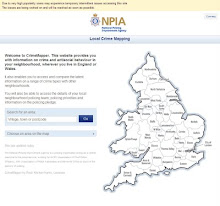The chairman of a Commons committee which has led an inquiry
into crime figures accused Home Office ministers of “complacency” after they
trumpeted yesterday’s figures as a success for the government.
 |
| Bernard Jenkin MP |
Bernard Jenkin MP, chairman of the public administration
select committee said: “I am disappointed about the apparent complacency shown
in some of the comments being made about today’s release of crime statistics. It
is as though there were no concerns at all about the reliability of the police
recorded crime statistics, let alone that they have been officially downgraded
by the statistics watchdog. It is this kind of complacency which has led to the
unreliability and downgrading in the first place – and this complacency goes
right up to Home Office ministers.”
Last November the committee was told by serving and retired
officers that official crime figures are skewed by the police - often at the
instruction of senior officers - to make their performance appear far better
than it is in reality.
In response the UK Statistics Authority stepped in last week
to strip the figures of their “national statistics” kitemark.
Until we can trust the way crime statistics are collated, there is little chance of restoring public faith in their veracity.
Crime fell by 10 per cent in
England and Wales in the year to 2013, according to figures released yesterday
by the Office for National Statistics. On the face of it that is excellent
news, confounding the predictions of those who said cuts in local police
budgets would see a rise in criminality.
But does anyone believe the figures any more? Public confidence has been
dented by recent revelations from police “whistleblowers” that the way forces
record crime has been flawed, though that is putting it kindly: fiddled, others
would call it. Indeed, the UK Statistics Authority has withdrawn its official
designation from all crime data recorded by the police.
Yesterday’s statistics, however, were based on the British Crime Survey
(BCS) of some 40,000 people, who are asked about their experiences over the
past 12 months. The BCS has consistently shown a decline in offending over the
past 20 years. Yet it is an unsatisfactory measure, since it excludes offences
involving the under-16s, the homeless, all businesses, murder, manslaughter and
so-called victimless crimes such as drug abuse. Having two sets of figures is
also confusing: once, the BCS was supposed to complement the police data, but
it has now become the main measurement of crime.
Arguably, the collection of national – as opposed to local – crime figures
is no longer worthwhile, if it ever was. As long ago as 1968, the Perks
Committee on Criminal Statistics proposed that the periodic deluge of
statistics should be replaced by an annual crime index, weighted to reflect the
relative seriousness of offences. This is a good idea; but such an index would
need to be based on police recorded figures – and until we can trust the way
they are collated, there is little chance of restoring public faith in their
veracity.























